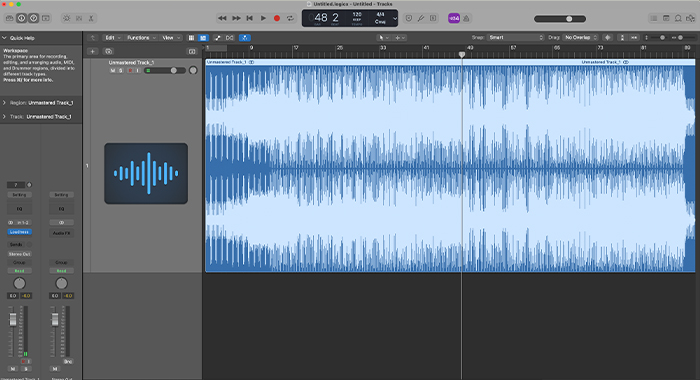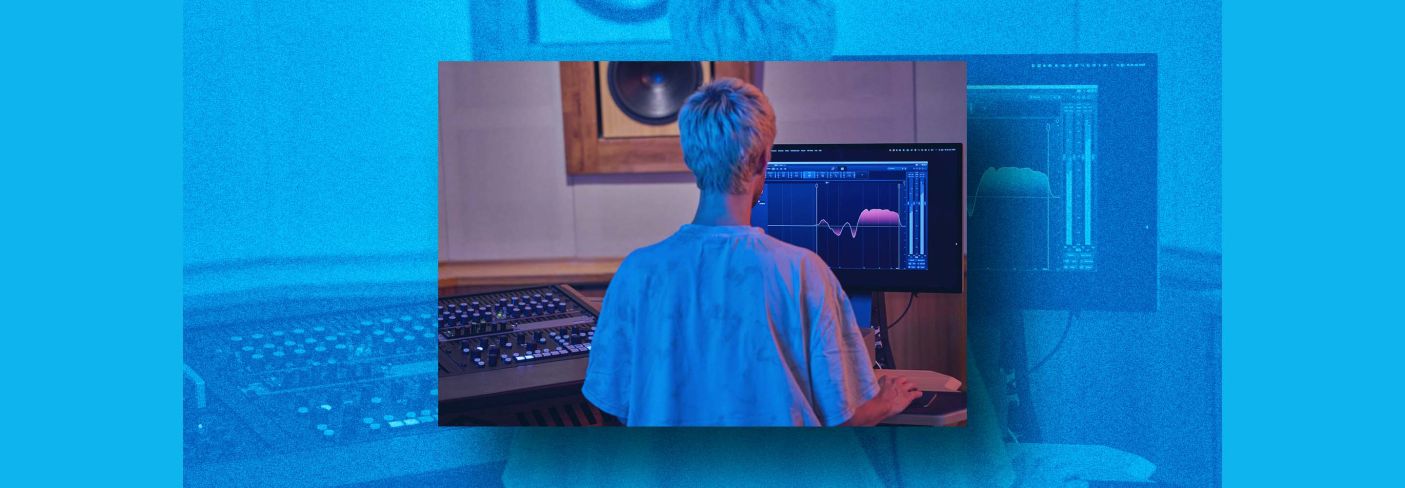Achieving optimal audio mastering for streaming platforms involves balancing loudness and dynamic range. Ensuring consistency across all devices is key to maximizing sound quality.
Mastering your audio for streaming services is crucial in today’s digital music landscape. With users consuming content across various platforms, delivering a consistent and balanced sound is essential for maximizing listener experience. By understanding the nuances of audio mastering and implementing key strategies, you can enhance the quality of your music and make it stand out in the competitive streaming market.
We will explore valuable tips and techniques to help you achieve professional-grade results when mastering audio for streaming platforms.

Credit: www.masteringthemix.com
What Is Audio Mastering?
Audio mastering is the final step in the production process that ensures your music sounds polished and professional across various playback systems. Let’s dive into the importance of audio mastering and the key steps involved.
Importance Of Audio Mastering
Audio mastering enhances the overall sound quality, balances the mix, and optimizes the audio for streaming platforms. It ensures consistency and maximizes the impact of your music.
Key Steps In Audio Mastering
1. Preparing the Mix: Assess the mix for any flaws or inconsistencies that need to be addressed before mastering.
2. Equalization (EQ): Adjust the frequency balance to enhance clarity and tonal balance in the music.
3. Compression: Control dynamics and ensure a balanced sound by applying compression to the mix.
4. Stereo Enhancement: Enhance the stereo image to create a wider, more immersive listening experience.
5. Limiting: Apply limiting to ensure the audio reaches the desired loudness level without distortion.
6. Quality Control: Listen to the mastered audio across different playback systems to ensure it sounds consistent and professional.
Understanding Streaming Platform Requirements
Understanding Streaming Platform Requirements is crucial for ensuring your audio content meets the standards set by popular streaming platforms. To deliver high-quality sound to listeners, it’s important to have a good grasp of Audio Mastering Tips tailored specifically for streaming services.
Audio Format And Compression
Streaming platforms often have specific requirements for audio format and compression to optimize playback quality. Understanding these specifications helps in preparing your audio files for streaming without any loss in sound fidelity.
Loudness Standards
Adhering to loudness standards is crucial for ensuring consistency in volume levels across different tracks. By mastering your audio to meet these standards, you provide a seamless listening experience for your audience on various streaming platforms.
Optimizing Your Mix For Streaming
When it comes to optimizing your mix for streaming, there are specific techniques and considerations that can make a significant impact on the final sound quality of your music. Streaming platforms have their own unique audio compression standards, and understanding how to prepare your tracks accordingly is essential. By paying attention to details such as balancing EQ and dynamics, and avoiding clipping and distortion, you can ensure that your music sounds its best when streamed by your audience. Let’s delve into some vital mastering tips to optimize your mix for streaming.
Balancing Eq And Dynamics
Balancing EQ and dynamics is crucial for creating a mix that translates well across various streaming platforms. Pay attention to the frequency balance of your tracks, making sure that no single range overpowers the others. Using a multiband compressor can help you control the dynamics of different frequency bands, ensuring a balanced and cohesive sound. Utilize EQ adjustments to address any frequency imbalances, making subtle tweaks to enhance the overall mix without sacrificing the integrity of the original recording. Striking the right balance of EQ and dynamics can make a significant difference in how your music is perceived by listeners on streaming platforms.
Avoiding Clipping And Distortion
Avoiding clipping and distortion is paramount when preparing your mix for streaming. Streaming services apply their own compression algorithms to standardize audio playback, and excessively loud or clipped sections can result in audible distortion when played back. Carefully monitor your levels during the mastering process, ensuring that peaks are kept in check without sacrificing the overall impact of the music. By maintaining appropriate headroom and utilizing dynamic range processing tools, you can prevent your tracks from being negatively affected by compression on streaming platforms.
Tools And Techniques For Audio Mastering
When it comes to audio mastering for streaming platforms, having the right tools and techniques in place is crucial to achieving professional-quality sound. In this section, we will explore some key tools and techniques that are commonly used in audio mastering, including the use of limiters and compressors, as well as how to apply multiband compression effectively.
Maximizing Impact On Different Streaming Platforms
When it comes to distributing your music on streaming platforms, mastering is a crucial step to ensure that your tracks sound their best. However, each platform has its unique parameters and requirements, so it’s essential to customize your audio specifically for each platform. In this article, we will explore some audio mastering tips to maximize the impact of your music on popular streaming platforms like Spotify and Apple Music.
Customizing For Spotify
Spotify is one of the leading streaming platforms globally, with millions of users tuning in every day. To get the most out of this platform, there are a few key considerations to keep in mind when mastering your tracks for Spotify:
- Normalize your loudness levels: Spotify uses loudness normalization, ensuring that tracks play at a consistent volume. Aim for an integrated loudness level of -14 LUFS (Loudness Units Full Scale) to maintain the dynamic range of your music.
- Pay attention to the first few seconds: Spotify’s algorithm heavily relies on user engagement, so it’s important to capture listeners’ attention right from the start. Ensure that your track’s intro is compelling and engaging, grabbing the listener’s interest within the first few seconds.
- Optimize for mobile: With a significant portion of Spotify’s users listening on mobile devices, it’s crucial to consider this when mastering your tracks. Test your music on different mobile devices and make adjustments to ensure it sounds great even on smaller speakers or headphones.
Adapting For Apple Music
Apple Music is another major player in the streaming industry, boasting a large and dedicated user base. To maximize the impact of your music on Apple Music, here are a few tips to keep in mind:
- Follow Apple’s Mastered for iTunes guidelines: Apple provides a set of guidelines known as Mastered for iTunes, which details the best practices for optimizing your audio for their platform. Follow these guidelines to ensure that your music sounds its best on Apple Music.
- Emphasize on the mid-range frequencies: Apple devices are known for having well-balanced mid-range frequencies. Make sure your tracks have a strong presence in this frequency range to ensure they translate well across Apple Music’s ecosystem of devices.
- Provide high-quality artwork and metadata: Apple Music places a significant emphasis on visual aesthetics and proper metadata. Ensure that your album artwork is high-resolution and eye-catching, and that your metadata is accurate and has the necessary information to give your tracks maximum visibility.
By customizing your audio specifically for each streaming platform, you can ensure that your music retains its impact and quality, regardless of where it is played. Consider the unique requirements of platforms like Spotify and Apple Music, and make the necessary adjustments to achieve the optimal listening experience for your audience.

Credit: crumplepop.com

Credit: www.izotope.com
Frequently Asked Questions Of Audio Mastering Tips For Streaming Platforms
How Can I Prepare My Audio Tracks For Streaming Platforms?
To prepare your audio tracks for streaming platforms, ensure they are well-mastered with balanced levels, proper EQ, and dynamic range. Convert them to the appropriate format (e. g. , WAV, FLAC) and check for any distortion or clipping. Also, consider using online mastering services for professional results.
What Are The Best Audio Mastering Techniques For Streaming?
The best audio mastering techniques for streaming include optimizing the overall loudness to fit within the platform’s guidelines, using multi-band compression and EQ to enhance the frequency balance, and adding subtle stereo widening effects for depth. It’s also crucial to listen on different devices and adjust as necessary.
Why Is Audio Mastering Important For Streaming Platforms?
Audio mastering is vital for streaming platforms because it ensures consistent playback quality across different devices and platforms. It helps to optimize the sound for a particular platform’s requirements, resulting in a more professional and enjoyable listening experience for the audience.
Good mastering can make your music stand out and compete with other tracks on the streaming platform.
Conclusion
To sum up, mastering your audio for streaming platforms requires attention to detail and understanding of the specific requirements for each platform. By following these tips, you can ensure that your music sounds its best across a variety of devices and streaming services.
Remember to keep experimenting and refining your mastering process to achieve the best results for your music on streaming platforms.